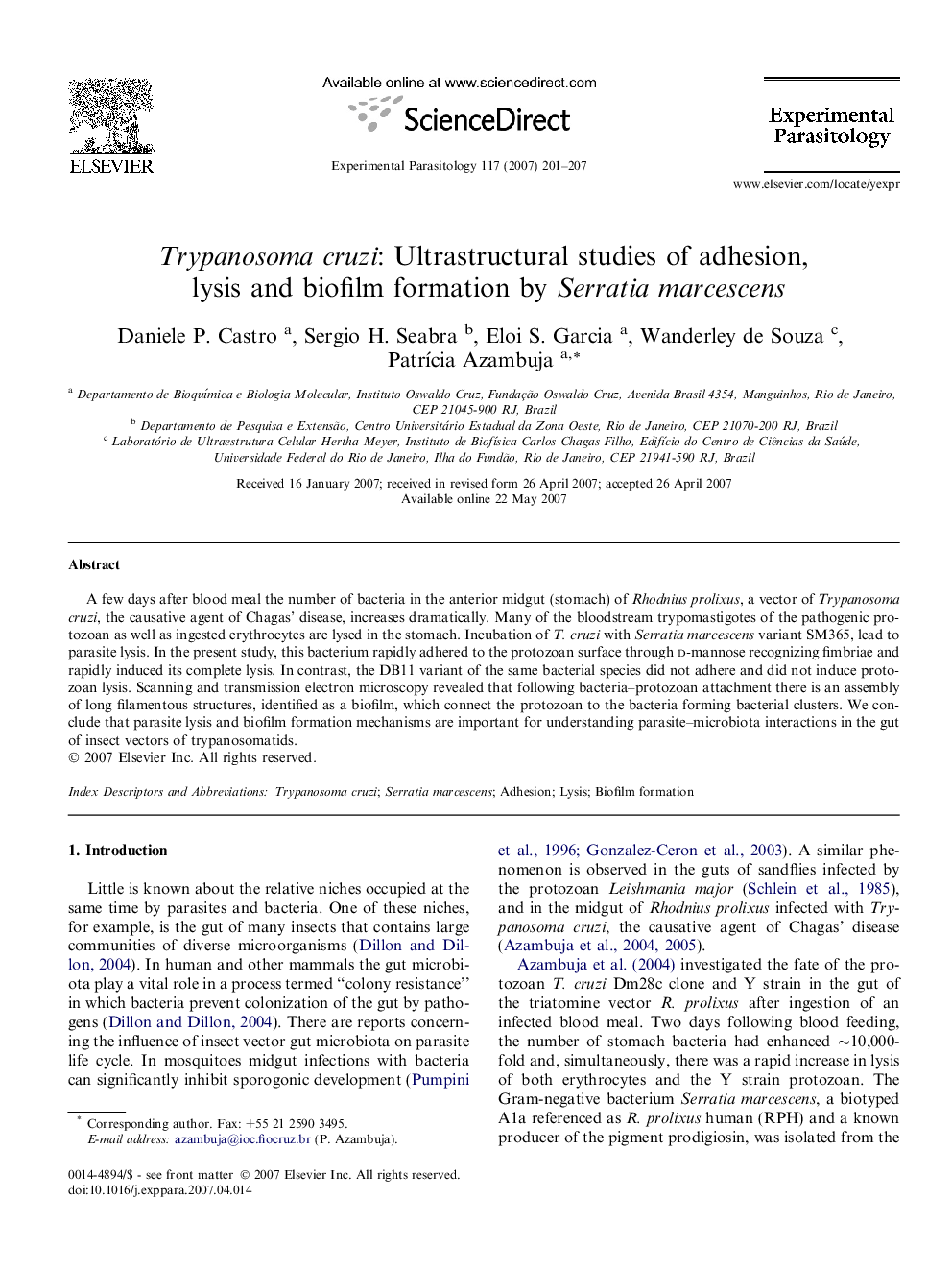| کد مقاله | کد نشریه | سال انتشار | مقاله انگلیسی | نسخه تمام متن |
|---|---|---|---|---|
| 4371818 | 1302542 | 2007 | 7 صفحه PDF | دانلود رایگان |

A few days after blood meal the number of bacteria in the anterior midgut (stomach) of Rhodnius prolixus, a vector of Trypanosoma cruzi, the causative agent of Chagas’ disease, increases dramatically. Many of the bloodstream trypomastigotes of the pathogenic protozoan as well as ingested erythrocytes are lysed in the stomach. Incubation of T. cruzi with Serratia marcescens variant SM365, lead to parasite lysis. In the present study, this bacterium rapidly adhered to the protozoan surface through d-mannose recognizing fimbriae and rapidly induced its complete lysis. In contrast, the DB11 variant of the same bacterial species did not adhere and did not induce protozoan lysis. Scanning and transmission electron microscopy revealed that following bacteria–protozoan attachment there is an assembly of long filamentous structures, identified as a biofilm, which connect the protozoan to the bacteria forming bacterial clusters. We conclude that parasite lysis and biofilm formation mechanisms are important for understanding parasite–microbiota interactions in the gut of insect vectors of trypanosomatids.
Journal: Experimental Parasitology - Volume 117, Issue 2, October 2007, Pages 201–207